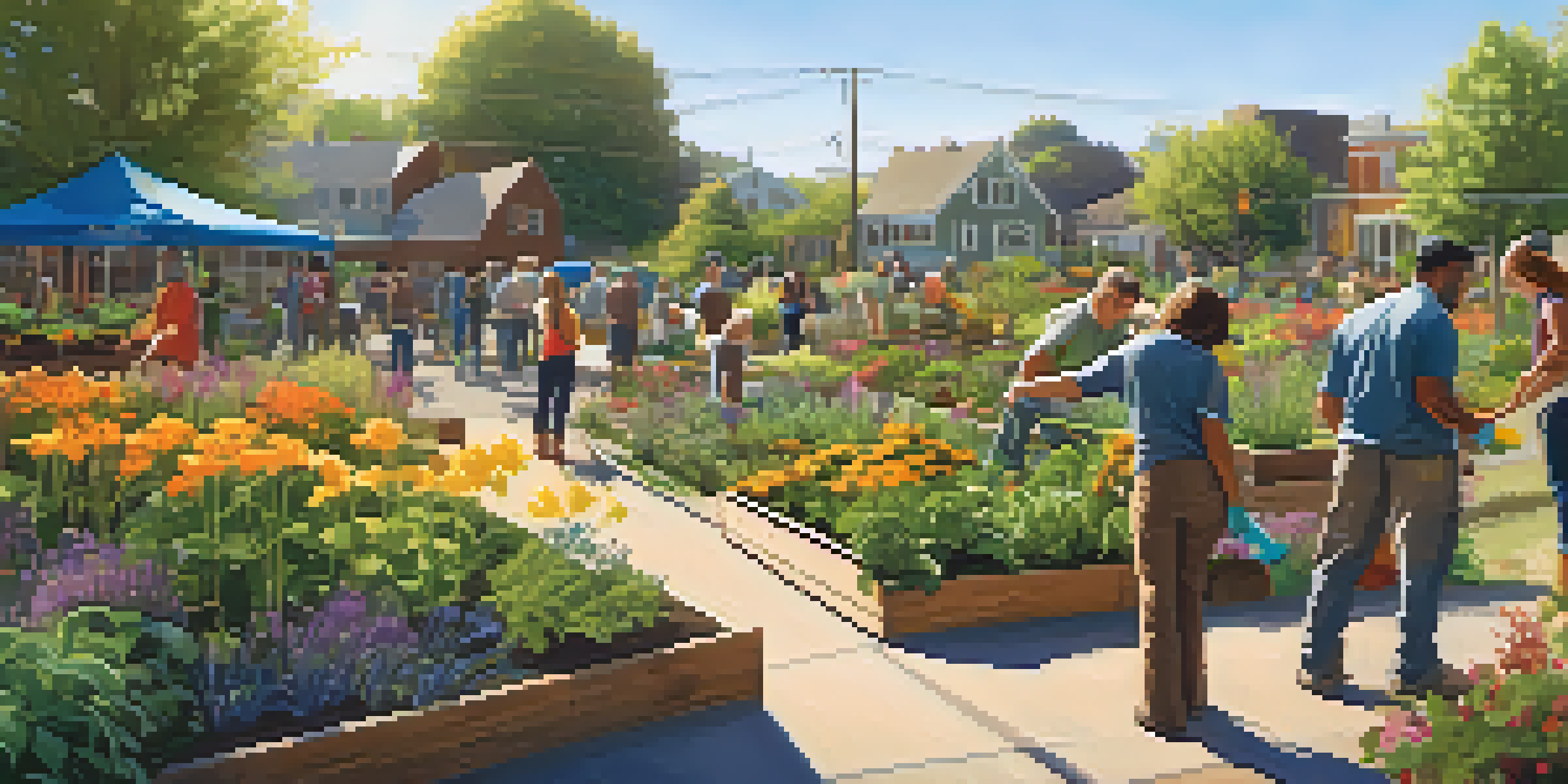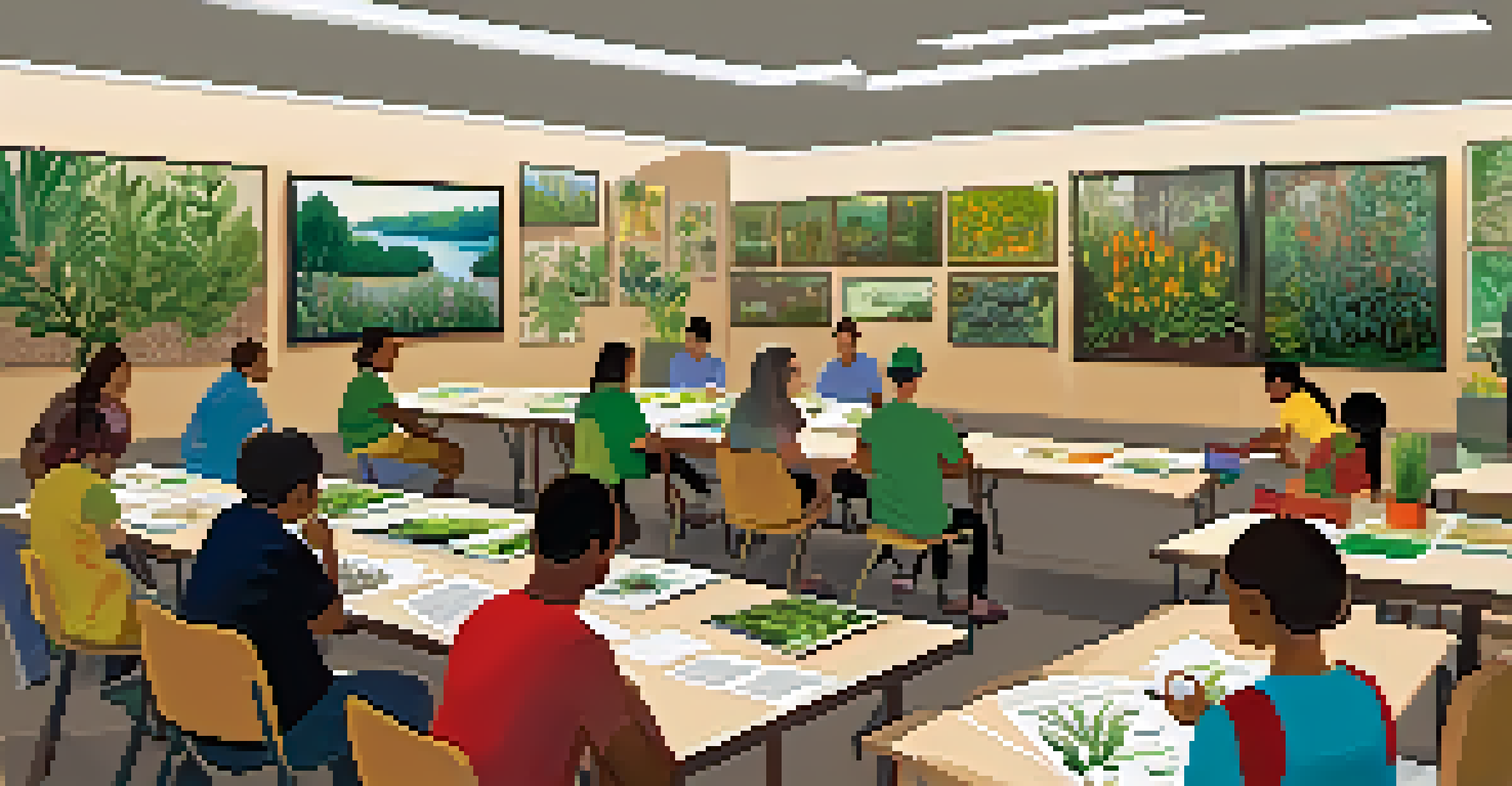Community-Led Initiatives for Preserving Local Plant Species

The Importance of Local Plant Species for Ecosystems
Local plant species are not just pretty to look at; they play a crucial role in maintaining the balance of their ecosystems. They provide food and shelter for local wildlife, help in soil formation, and contribute to the overall health of the environment. When these species thrive, so do the animals and insects that depend on them, creating a rich tapestry of life.
The greatest threat to our planet is the belief that someone else will save it.
However, many of these plants are under threat from urban development, climate change, and invasive species. This loss can lead to a domino effect, disrupting food chains and reducing biodiversity. It's critical that we recognize the importance of these plants not only for nature but also for our health and well-being.
Community-led initiatives are stepping in to address these challenges, reminding us that preserving local flora is a shared responsibility. By coming together, community members can create and implement effective strategies that support the survival of these vital species.
Community Engagement: The Heart of Preservation
Engaging the community is key to any successful initiative aimed at preserving local plant species. When people feel connected to their local environment, they are more likely to take action to protect it. Activities such as community workshops, nature walks, and educational programs can foster this connection, helping individuals to appreciate the unique plants that grow in their area.

For example, a community garden project can serve as a living classroom where residents learn to identify native plants and understand their ecological roles. These hands-on experiences not only deepen knowledge but also build relationships among community members, creating a sense of ownership and responsibility.
Local Plants Sustain Ecosystems
Local plant species are essential for maintaining ecological balance, providing food and shelter for wildlife while contributing to biodiversity.
Moreover, social media platforms can amplify these efforts by sharing success stories and gathering support. When people see their neighbors actively participating in conservation efforts, they are inspired to join in, creating a ripple effect of action and awareness.
Local Partnerships: Strength in Collaboration
Building partnerships with local organizations, schools, and businesses can significantly enhance community initiatives. Collaborative efforts can pool resources, knowledge, and manpower, making it easier to launch and sustain projects. For instance, a local school might partner with a nearby conservation group to create a native plant garden on campus, providing students with hands-on learning opportunities.
We won’t have a society if we destroy the environment.
Partnerships can also help in securing funding and grants, which are often necessary for larger projects. When local organizations come together with a shared goal, they can present a united front to potential funders, showcasing the community's commitment to preserving its natural heritage.
Additionally, these collaborations can lead to innovative solutions that might not have been possible independently. By combining diverse perspectives and expertise, communities can tackle preservation challenges more effectively and creatively.
Educational Programs: Cultivating Awareness and Knowledge
Educational programs are vital in raising awareness about the importance of local plant species. Schools, libraries, and community centers can host workshops and lectures that delve into topics such as native plants, their benefits, and the threats they face. By equipping individuals with knowledge, communities empower them to take action.
For example, a local workshop might teach participants how to identify invasive species and provide tips on how to manage them. This not only informs the community but also encourages active participation in conservation efforts. When people understand the impact of their actions, they're more likely to contribute positively to their environment.
Community Action Drives Preservation
Engaging the community through workshops and partnerships fosters a sense of ownership and responsibility towards local plant conservation.
Furthermore, creating educational materials, such as brochures and online resources, can extend the reach of these programs. With accessible information, community members can become advocates for local plant preservation, spreading the word and encouraging others to get involved.
Restoration Projects: Bringing Life Back to Local Habitats
Restoration projects play a crucial role in reviving local habitats and protecting native plant species. These initiatives often involve removing invasive species, replanting native plants, and restoring natural landscapes to their original state. Community members can come together for planting days, creating a sense of camaraderie while making a tangible impact.
One successful example is the restoration of a local wetland area that had been degraded over the years. Volunteers worked together to remove non-native plants and plant native species, leading to a resurgence of local wildlife and improved water quality. These projects not only benefit the environment but also provide a sense of pride and accomplishment for the community.
Moreover, restoration projects can serve as living examples of the importance of local plant species. They demonstrate the resilience of ecosystems and the positive outcomes that can arise from proactive community involvement.
Advocacy: Mobilizing the Community for Change
Advocacy is a powerful tool for communities seeking to protect their local plant species. By mobilizing residents to voice their concerns, communities can influence local policies and decisions that impact the environment. This can be as simple as organizing petitions or as complex as rallying for changes in land use regulations.
For instance, a community group might advocate for the establishment of a local park that prioritizes native plant species. By presenting data on the benefits of these plants and rallying community support, they can create a compelling case for decision-makers. The collective voice of engaged citizens can lead to significant changes in how local resources are managed.
Restoration Projects Revive Habitats
Restoration initiatives, such as removing invasive species and replanting natives, can rejuvenate local ecosystems and enhance community pride.
Additionally, leveraging social media for advocacy can amplify messages and bring broader attention to local issues. When community members share their stories and successes, they can inspire others and create a movement for change.
Celebrating Success: Recognizing Community Efforts
Celebrating the successes of community-led initiatives is essential to maintain momentum and encourage ongoing participation. Recognizing the hard work and dedication of volunteers not only boosts morale but also highlights the importance of their efforts in preserving local plant species. Events such as community festivals, award ceremonies, or even simple thank-you gatherings can help honor these contributions.
For example, a community may host an annual native plant festival where locals can showcase their projects, share stories, and educate others about the importance of native flora. Such celebrations foster a sense of pride and belonging, reminding everyone of the collective impact they are making.

Moreover, sharing successes through local media and social channels can inspire other communities to undertake similar initiatives. When people see the positive outcomes of community efforts, they are motivated to engage in their own conservation projects, creating a ripple effect of preservation.